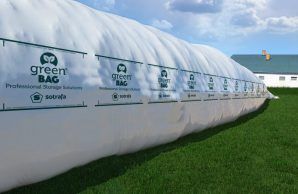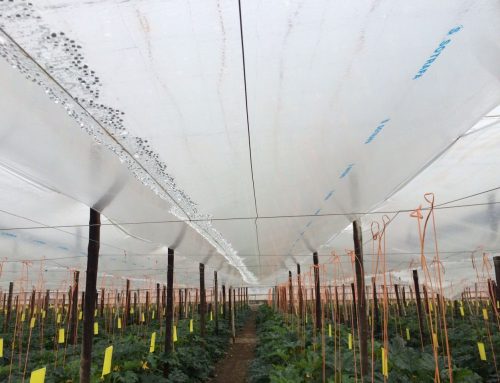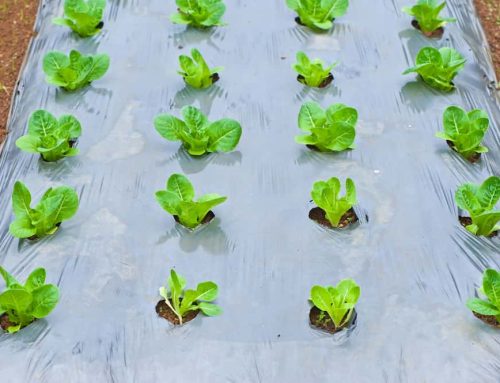When we talk about silage, we refer to the process of conservation of livestock forage or agricultural by-products, through which an ideal fermentation is produced that allows it to be kept safely, with a greater nutritional power, and for a longer time.
What is silage for?
It is one of the most used practices in the agricultural sector to safeguard pasture, cereals, or by-products during the winter and to be able to take advantage of them and their properties in summer.
The product can be preserved for months or even years and is a perfect eco-friendly alternative, since you can store surplus material and use it later, thus eliminating losses in production.
Silage success is down to several factors:
- Material to be ensiled
- Technique used
- Successful fermentation
Stages of the silage process
The silage process is divided into several stages:
1.- Aerobic phase (A short process that lasts as long as oxygen is present)
In this first phase, the cells of the products just ensiled continue to consume the oxygen from the air inside the silo. These cells emit CO2, water and heat.
Simultaneously, the aerobic bacteria continue to grow and use carbohydrates as an energy source. At the moment when oxygen is depleted, these anaerobic conditions occur in the forage and the cells release carbohydrates, proteins and fats that will become food for the bacteria.
It is essential to maintain certain practices when filling the silo, as part of the success will depend on it.
2.- Anaerobic phase (beginning of the preservation process)
Once the oxygen is depleted, the anaerobic bacteria that produce the acid multiply. As the PH goes down, the microorganisms that help in the production of lactic acid also multiply.
This phase lasts between 10 and 21 days, until the PH drops enough. To optimize this process, addtives can be used.
3.- Stable phase (air-free environment is maintained)
This is the time when the silage rests and stabilizes. It can last for months and even years. It is essential that it is well sealed, and that the ensiling technique has been carried out correctly.
Be Careful!! Any contact with the air would affect the crop and spoilage would occur.
4.- Aerobic deterioration phase
If we open the silo and expose i to the air, the aerobic deterioration pahse takes place, therefore having an airtight silo is very important.
Tears and gaps must be repaired and made airtight as soon as possible. This deterioration can also be minimized with a rapid distribution of the silage
Quality silage with Sotrafa
The solutions with the Sotrafa silage range are effective and have been created for each customers needs:
Silofresh range
The latest generation films, developed specially to cover forage and preserve it for animal feed. The choice of film will depend on the results we want to achieve, and the financial outlay we want to make.

In this range of films, we can find different products:
– SILOFRESH PRO
Silage film recommended for standard use conditions, uniform quality, and very good quality-to-price ratio.
Silofresh Pro can be found in different colours: black, white/black, etc… and in different thicknesses.
– SILOFRESH STRONG
Excellent film for the protection of silage with guaranteed mechanical properties. Silofresh Strong is characterized by a high resistance in the folds and therefore a lower possibility of tears, perforations, and performance problems.
Silofresh Strong can be found in different thicknesses and different colours: black, white/black, green/white, green/black, etc…
– SILOFRESH GOLD
Silage film five times stronger than a standard silage film. Lightweight, easy to use and with an 18-month warranty.
Like the rest of the range, Silofresh Gold can be purchased in different colours (white/black, black/green, etc…) and different thicknesses depending on what the customer requires.
Greenbag (Silage bag)
Sotrafa’s Greenbag is a two-colour bag developed for the conservation and maintenance of livestock feed, biogas plantations, compost production, storage of industrial by-products such as sugar beet pulp, staple production waste, etc…

Barrier films
Barrier films are films made with oxygen barrier properties and are used under the silage film.
These films create a complete vacuum inside the silo, thus eliminating the existence of oxygen inside, which is what causes deterioration in the ensiled product.
Among our barrier films we highlight:
– Underlayer film: it offers a perfect adaptation to forage. It is thin, flexible and eliminates air pockets.
– Silaseal: bluish sheet that creates a complete vacuum inside in which the oxygen concentrated inside is absorbed through the natural fermentation process.
– Underlayer Oxygen Barrier: sheet that 100% prevents the entry of oxygen adhering to the silo completely and not allowing air pockets between the film and the forage. This significantly reduces deterioration at the top and edges of the silo, resulting in excellent quality forage.

What should I consider for the correct conservation of my silage?
- THE CUT: The choice of the cutting date is the factor that most closely determines the nutritional value of the herb. Production increases and the quality of the grass declines as the harvest date is delayed.
- CHOPPING: Chopping is important because it will allow them to increase compaction and decrease air infiltration.
- COMPACTING: Ensure compaction, spreading the chopped forage in not very thick layers. The greater the dry matter, the greater the compaction must be.
- SEALING THE SILO: Ensure a correct closure and sealing of the silo and check regularly to avoid air infiltration in the silage. Avoid breaks in the plastic or poorly sealed edges of the silo.
- PERIODIC REVIEW of the silo cover and repair any breaks that may have appeared in the plastic. In trench silos, before starting the filling, it is recommended to place the plastic sheets so that they are located between the silo wall and the forage, in this way the losses at the edges of the silo bark will be reduced.
How do we differentiate the final quality of the silage?
Good Silage: The silage should be a yellowish-green colour, with a fresh, fruit smell.
Poor Silage: We will distinguish a dark colour, with the smell of tobacco or caramel, indicative of excessive aeration.
To avoid failures of this type, it is important to control and optimize the silage process in each phase, as well as using a good airtight, protective cover to ensure success.
Get in touch with our technical professionals, they will be able to guide you and recommend the most effective options in each case.





